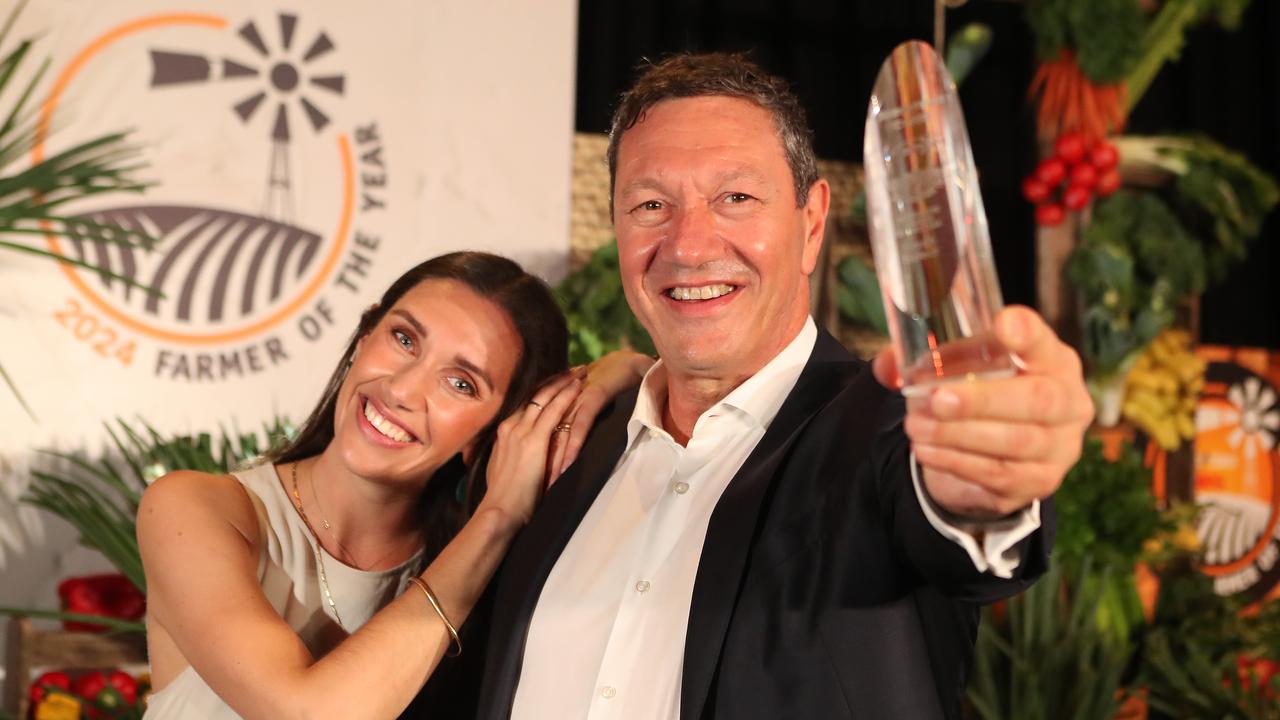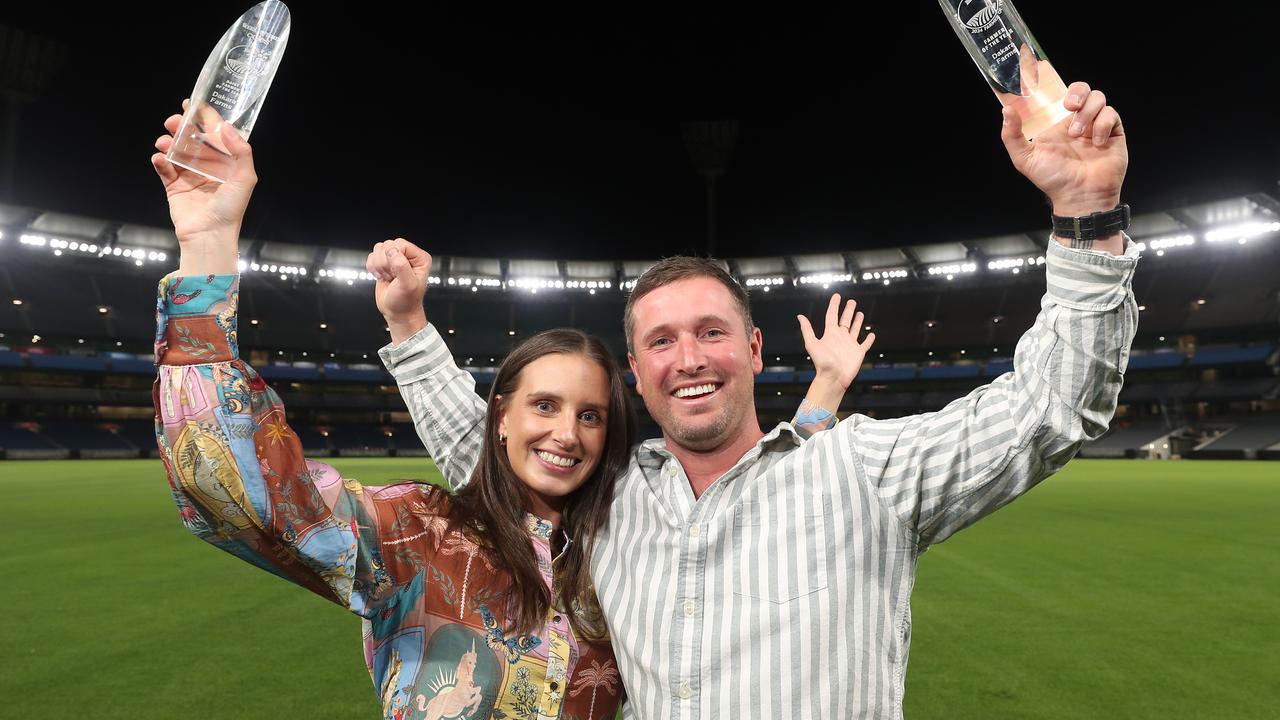Foxes takes direct approach
DUST storms were taking their toll, so Tony Fox outsmarted them.

DUST storms were taking their toll, so Tony Fox outsmarted them.
If you're a crop farmer southwest of Swan Hill there's a big chance your surname will be Fox.
Tony Fox is the fourth-generation farmer to work his wheat, barley, canola and field pea property - 3000ha sown this year - at Goschen, and he said there's plenty more where he came from.
"There are a few Foxes in the area," said Tony, who works on the farm with his 73-year-old father, Carl, and son Dylan, 20.
"Just next to us we have three.
"My great-grandfather originally started share-farming in the Mallee and we haven't gone far since."
Given this traditional link to the land, the Foxes have been quick to adopt modern farming techniques, equipment and science.
Tony said the greatest motivator for change on the farm was soil drift and erosion, which saw them move from tilling to direct drilling four years ago.
"In the Mallee, soil is lighter and more fragile and we'd get dust storms where the wind would create enough dust to block out the sun," said the 47-year-old, who also works with his wife, Cindy, and mother Betty.
"It used to be the case that we'd get to February when it would be blowing a gale and you'd see your paddock blowing over the road. When you talk to older people it was apparently worse years ago. It's been a problem in the Mallee and people have tried to change their farming practices to counteract it.
"Dad and I talked about it for years and looked over the fence a bit and decided to change our method."
Where tilling breaks down the soil to a fine tilth, direct drilling is where grain seed is drilled in skinny knife-point rows, into an existing grazed pasture or stubble.
Initially Tony and Carl didn't invest large sums of money, converting an airseeder into a direct drilling unit. But this year they will buy a Gason Hydromax.
From our point of view direct drilling has been good from a soil conservation perspective and yield increases," Tony said.
"It's also crucial to get all the seed and fertiliser in the right spot to get the best germination.
"Now those dust storms don't happen. We don't worry about it. It's made the summer much more pleasant."
Though, he added, opting for direct drilling was like "starting to farm again", changing systems and starting some techniques from scratch.
Tony said yields had also increased from inter-row sowing, where rows were sowed interchangeably between standing stubble in alternate years.
The key to perfect inter-row sowing, he said, was the increased affordability of auto-steer tractors, which get down to 2cm accuracy, "from one end of the paddock to the other".
"It's allowed us to do more for less, do more acres with less skill level. The tractor drives itself," he said. "A few of the old guys talk about losing the old skills, but I reckon I don't know how to drive a team of horses either. At the end of the day it doesn't really matter."
One of the greatest advances on the Fox farm has been the employment of an AGRIvision agronomist, who does yearly testing of soil, paddock inspections and a farm plan.
For example, Tony and Carl used to sow once weeds had germinated and been cleared; now they sow earlier, around Anzac Day through to the first week of June, applying pre-emergent chemical, which means they get the best growing season for the crop and more yield.
"We sit down with him in January/February to finalise what we'll sow and where, fertilisation and chemical rates, assess the season, how it's travelling in terms of moisture.
"So when it comes to sowing we just open the book and follow the plan. We don't make decisions on the run. It's made a big change to this farm.
"He tells us what's going wrong or right. If there's a disease in the area he emails us about what to look for. In the past if there was fungus or rust going around we would be conservative and tended to do nothing. Now the science is out there to give you direction on which way to go. It's now science rather than gut feeling. Having an agronomist has made us proactive rather than reactive."
Tony said an agronomist ensures they document their systems and work to a calendar more than in the past.
The result of these on-farm changes is higher yields.
With wheat and barley roughly two-thirds of their crop, the Foxes aim for an average 2.5 tonnes to the hectare.
Canola is 1.6 tonnes/ha and chickpeas and field peas about 1.8 tonnes/ha. This is in stark contrast to their drought figures 10 years ago: about 0.5 tonnes/ha for wheat and barley.
"We would have adopted new systems earlier if it hadn't been for the drought," he said.
Wheat and barley is transported for either domestic or export purposes through GrainCorp, ABA or Garrisons, with grain stored on the farm sent to MVP Feeds in Cohuna or Ridleys.
For the past 20 years their chickpeas and peas have been sent to McKenzie's - best known for its bicarb soda, the brand has been processing grain legumes, herbs and spices in Australia more than 160 years.
Tony said the benefits of going with a major company such as McKenzie's is that he has a steady market to rely on.
"If some years I have production issues - if field peas are cracked or small -they're prepared to work with me. They'll work through good and bad times."
McKenzie's manager director Helen Ward said while the company had more than 100 products in their range, grains were their top seller.
She agreed with Tony, saying that keeping trustworthy suppliers on board was paramount.
"We do the right thing by them and they do the right thing by us. There's a level of trust there," said Helen, whose great-great grandmother started the company in the 1850s in Melbourne.
"If there's an issue with the crop, we trust they will tell us."
She said the company estimate for the coming harvest in Victoria was 70,000 tonnes of field peas, 93,000 tonnes of lentils and 3.8 million tonnes of wheat.
All grain is destoned, cleaned and processed at the company's Altona mill, 24 hours a day, six days a week before going to domestic or export markets.


